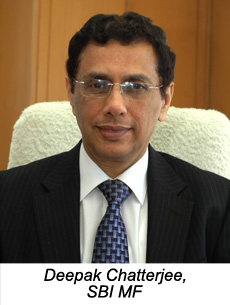SBI MF completes 25 years of operations in the Indian mutual fund industry today. Despite private sector AMCs’ aggressive entry, SBI MF is in the coveted top 10 AMC space.
 Your fund house completes 25 years of operations. Take us through the changes your fund house has undergone.
Your fund house completes 25 years of operations. Take us through the changes your fund house has undergone.
SBI MF was launched in June 1987. It was a completely different era. We came out with the first scheme- SBI Magnum Regular Income Schemeon 1st January 1988. In 1991 we launched Magnum Multiplier which is called Magnum Equity Fund now. It’s a fond memory for us because this scheme has been in existence for so many years. It has been a consistent performer.When we started, it was an era of assured return schemes. That was stopped subsequently.
During 1990s, a lot market linked funds were launched. We had launched Tax Gain and Magnum Multiplier, Magnum Tax Gain, Global and Balanced Fund at that time. In 1999, we launched the hugely popular SBI Contra Fund. Our Magnum Tax Gain almost became synonymous with a PPF. It has a very large number of investors.
Now, the industry has realized that you can’t have NFOs just for the sake of NFOs. The spate of NFOs has died down. The industry saw its golden period from 2004 to 2007. We also saw our golden period around the same time when we won The ‘CNBC CRISIL Mutual Fund of the Year Award’ in 2007.
I think managing change has become an important aspect of functioning of any fund house. We managed change very well. The regulatory oversight is going to make the industry even stronger. Now, many fund houses have shifted to a more process driven, risk focused and template managed fund management process rather than depending on a star fund manager. So, the personality of the fund manager is slightly at the background. We are much more globally aligned now.
Public sector mutual funds started operations much before private sector mutual funds. Today private sector MFs command a major share of the Industry AUM. SBI MF is one of the few public sectors AMC which continues among the top. What has worked in your favour?
SBI as the largest bank of India has the ability to manage change efficiently. Belonging to the same family, we share the same DNA. Managing change has been the hallmark of SBI MF. When the transition from assured return to market linked product set in many fund houses found it very difficult. We are the only entity which started as SBI Mutual Fund in 1987 and continue to remain SBI MF till today. Others have come and gone or have entered in a new avatar.
What is your AUM share outside the top 10 cities? What plans do you have to increase the share of tier II and III cities?
Our AUM share beyond the top 10 cities is much better than the industry. We believe in reaching out to the smallest investor. We have launched a pan India investor education campaign where nine mutual fund ‘pathshalas’ are criss-crossing the country in tier II and tier III towns. We are covering a large geography.
Even without your parent bank, you have one of the widest networks of IFAs in the country. How do you keep them motivated in these challenging circumstances?
We hold regular training programs for distributors. We help them in various processes. IFAs in smaller towns are facing a lot of problems and whenever I meet them, I tell them to invest more in relationships and investor interest than in mere transactions. I agree that it’s easier said than done because it has its own costs. But the entire industry is facing this dilemma.
Your AUM increased from Rs. 41672 crore in FY11 to Rs 42,042 crore in 2012. In which category did you see the inflows?
It was largely in liquid, FMPs and gold funds. Our SBI Dynamic Bond Fund has been a runaway success. It has given good returns.
Various models have been suggested to SEBI to compensate distributors. Which model do you think would be apt?
I had suggested SEBI to start a multiple share class structure in India which is prevalent the world over. If you have multiple share class then each share class can have different total expense ratio (TER). We have also suggested fungibility under the TER.
Some fund houses have filed offer documents for launching infrastructure debt funds. Would you also be looking at this space?
We have completed most of the work and are going to approach SEBI soon.
What are your views on the recent alternate investment funds (AIF)guidelines by SEBI?
The recent announcement by SEBI about Alternate Investment Funds (AIF) is very exciting because we can do many more things which we were constrained to do. Through this, we can launch a real estate fund, SME fund or a venture capital fund. Through the new route we can target high net worth individuals or do a private placement. It thinks it’s a very good step by SEBI. Now we have to do everything under the MF space and whatever we do in the MF space is open for all kinds of investors.
What is your message to investors?
One big mistake which retail investors are making is stopping SIPs. We are advising investors to stay invested for the long-term. But the problem is that equities have not posted returns even for four years. Investors ask if four years is not long-term then what is long-term. Another way to look at this is that the worst is either over or very close to being over. We are a big economy with high domestic demand. Instead of coming in when the next bottom, it’s a good idea to stay invested in a disciplined manner.






